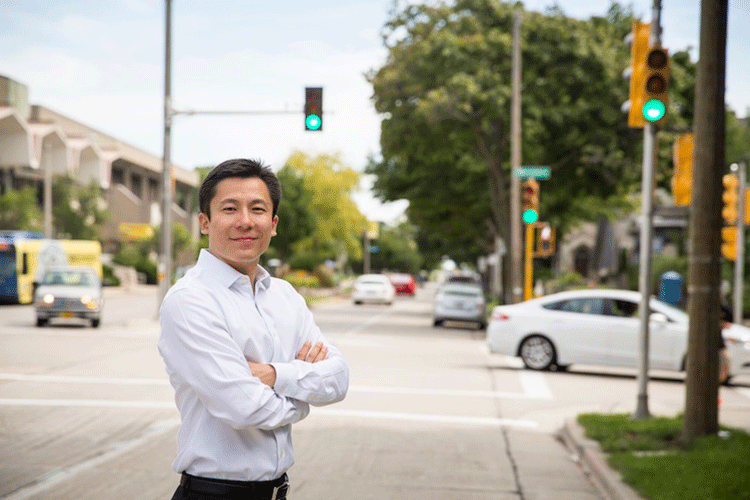A semi-truck gets wedged under a concrete bridge canopy, causing an hours-long highway delay and incurring transportation costs by the trucking company.
A large recreational vehicle slams into the side of a tunnel under a railroad bridge, injuring passengers and leading to an inspection by the railroad company to perform repairs and check if the track’s alignment was shifted by the accident.
According to a University of Wisconsin-Milwaukee highway safety expert, these collisions—called bridge and tunnel strikes—are frequent and costly, dogged by underreporting, an absence of comprehensive information on contributing causes, and disappointing prevention measures–including added signage, lighting, height detection systems, and actuated warning devices—that have achieved limited success.
That expert is the Xiao Qin, a professor of civil & environmental engineering and director of UWM’s Institute for Physical Infrastructure and Transportation.
In October, Qin was awarded $500,000 from the National Cooperative Highway Research Program (NCHRP) to address the problem of bridge and tunnel strikes not only in Wisconsin, but nationwide.
He and his team will develop, among other things, a best-practices guide and a national data clearinghouse to help state departments of transportation, public safety agencies, and the motor carrier industry prevent and mitigate the risk of bridge and tunnel strikes.
Qin’s team includes UWM College of Engineering & Applied Science faculty members Habib Tabatabai, professor, civil & environmental engineering and director of the UWM’s Structural Engineering Lab, and Andrew Graettinger, associate dean for research. Other team members represent Vanasse Hangen Brustlin, Inc., Applied Research Associates, and Specialized Freight Solutions.
Number and causes of bridge and tunnel strikes not being accurately recorded
Bridge and tunnel strikes involve commercial vehicles, recreational vehicles, buses, and agriculture and industrial equipment. In the United States, the National Highway Traffic Safety Administration reports that bridge strikes alone top 15,000 a year.
“It’s likely that the real figures are higher, as many such strikes go unreported or undetected until scheduled inspections,” Qin says.
One reason for the under-reporting: no standard “check box” exists on the crash report forms used by police.
“Overall, there is a lack of comprehensive information on the number, location, severity and mitigating factors of bridge and tunnel strikes, all of which make it harder to improve measures that prevent injuries to people and damage to vehicles and infrastructure,” Qin says.
One goal of the UWM research team is to create a more comprehensive reporting system that sheds light on the causes of these accidents.
Predicting and measuring the risk
There is a domino effect when considering the damage these accidents cause, Qin says.
“Financially, there are losses for haulers in the form of delays and vehicle damage,” he says. “But there are many other ways by which a bridge or tunnel strike become costly, damaging or at the least, frustrating.”
Initial and secondary crashes cause injuries and fatalities. Vehicles and highway infrastructure are damaged. Other drivers face detours and potentially costly delays. And any incident may require expensive responses from bridge and tunnel owners, state departments of transportation and public safety agencies.
Preventing these accidents is challenging, Qin says, given the multitude of contributing factors such as bridges, drivers, trucks and weather. But a lot is at stake.
“We need to design a reliable, accurate and practical method to predict the risk and the cost of bridge and tunnel strikes by motor vehicles, especially by trucks,” he says, “so that stakeholders can make informed decisions and take appropriate actions to mitigate them.”
About the study
The NCHRP is a state DOT-driven research program that addresses transportation needs common across the United States. Administered by the National Academies of Sciences, Engineering, and Medicine, it is one of the most competitive national programs in highway research. This is the first award in a decade in which a UWM researcher was the primary contractor.
In addition to the best practices guide, the team will:
- develop a sustainable national clearinghouse for collecting and analyzing data, and communicating bridge and tunnel strike data and clearance information
- develop a data-driven method to evaluate the risk of a motor vehicle strike on any single bridge or tunnel
- develop prevention and mitigation strategies
- develop a roadmap for state departments of transportation to implement.
